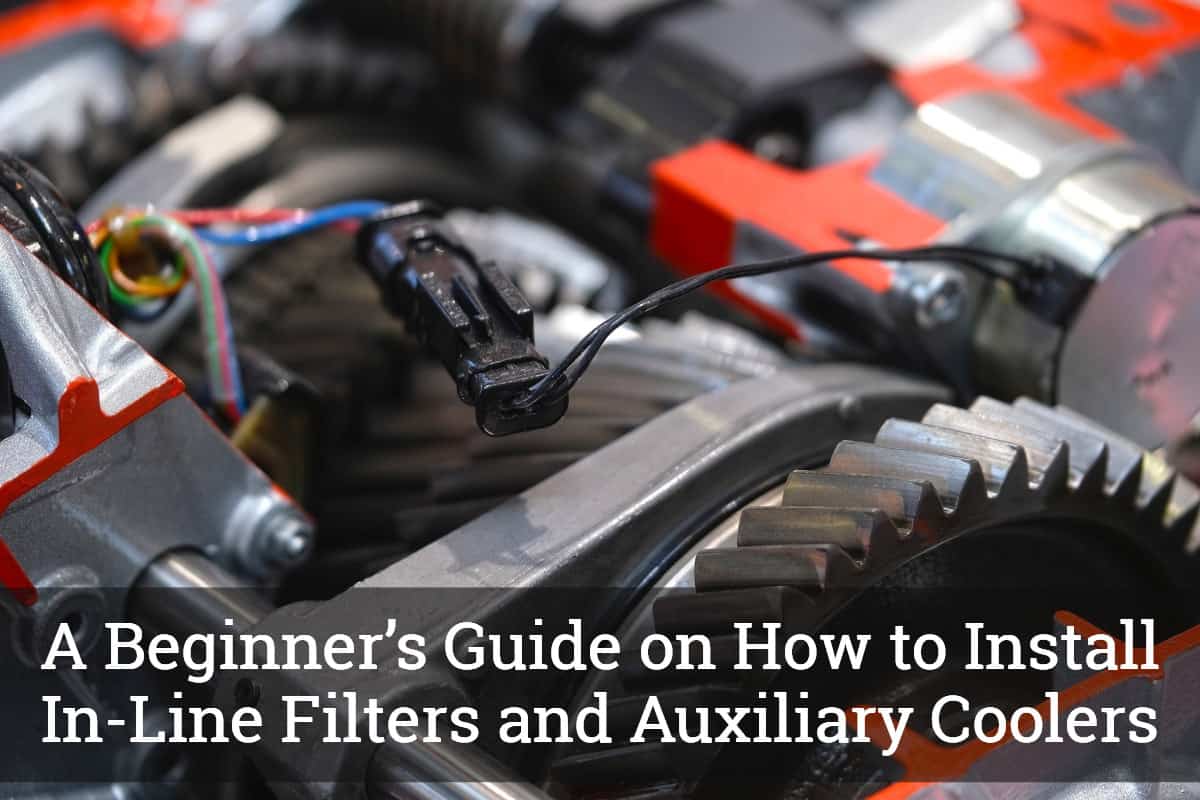When it comes to cars, there are basic tasks that you can successfully complete without the need to pay professionals for their service. A good example of this task is the installation of in-line filters and auxiliary coolers, which both have a significant role in the performance of your engine.
In the rest of this post, I will share with you how to install in-line filters and auxiliary coolers. It can be intimidating at first, but with the right steps and patience, you can accomplish the job even without a helping hand. It is critical, however, that you use the right products to be assured of the optimal outcomes and peak performance of your vehicle.
What You Will Need to Follow this Tutorial
Before we proceed with the steps, here are the materials that will be needed:
- In-line filter
- Auxiliary cooler
- Sticky foams
- Hose
- Locking round washers
Step-by-Step Guide on How to Install In-Line Filters and Auxiliary Coolers
Watch the short video below and read the steps on how you can easily install in-line filters without the need to go to a mechanic in your neighborhood:
To add an in-line filter to your car’s cooling system, here are the simple steps that you have to follow:
- Pay attention to the flow direction of the in-line filter and see to it that you are installing it right. The in-line filters are designed to flow in a single direction. If this is wrong, you are at risk of suffering from complicated problems.
- Install the line that connects the in-line filter. As shown in the video above, you have to look at the direction of the flow coming out of the radiator.
- Flare the end of the tube at which the in-line filter will be connected. This ensures a better and more secure connection between the two, preventing the possibility of leaking.
- See to it that the in-line filter will not be positioned anywhere it will be near an exhaust. Too much heat can cause significant damage to the filter.
- By now, the in-line filter is installed, making it possible to offer the protection that the transmission needs from contaminants.
The installation of an in-line filter is important because it improves the transmission, making sure that no contaminants will get through. If there are no impurities in the fuel system, you can enjoy big cost savings in the future. The good news is that these filters are affordable and require almost no maintenance.
Now that you are done with the installation of an in-line filter, the next thing that you have to do is to install the auxiliary cooler. Many products are available, which is already inclusive of everything that you will need to complete this task:
- Purchase a transmission cooler kit. Yes, there are countless options in the market. No, this does not mean that you should choose just any product. Take time to evaluate the possibilities and see which one is appropriate for your needs.
- Loosen the clamps that connect the intercooler hose. Remove the latter.
- Now, prepare the auxiliary cooler that you will install. Attach the sticky foams and the hose, making sure that you have the right connections.
- Remove the bolts that you can find on the top of the cooler. Raise it so that you can easily access the auxiliary cooler from behind.
- Position the auxiliary cooler next to the intercooler that you have. See to it that when the hood closes, it does not get in contact with the cooler. Lock and secure the auxiliary cooler using locking round washers.
- Connect the hoses that will link the auxiliary cooler to the transmission. At this point, you have already finished the installation of both the in-line filter and the auxiliary cooler.
- Before you consider the job done, start the vehicle. Run it for a few minutes. Open the hood. Inspect the auxiliary cooler and the in-line filters. See to it that there are no leaks to know if you have successfully completed the task.
An auxiliary cooler will help in extending the life of your vehicle’s transmission. It prevents the possibility of overheating, especially during long drives and if you live in a place that is usually hot. Just like the human body, too much heat can slow down the transmission, which is basically why you will greatly benefit from an auxiliary cooler.
The installation of an auxiliary cooler is also necessary if you often tow, especially heavy weights. Towing can add stress to the transmission and can make it experience too much heat, which can be minimized if you have an auxiliary cooler.
Pro Tips

Via: https://www.4runners.com/threads/how-to-4th-gen-v6-radiator-replacement-tranny-cooler-install.349/
Below are some tips about in-line filters and auxiliary coolers, or transmission coolers in general, which every novice in cars and engines should know:
- Always choose the right products to install as part of your transmission or engine system. You might be tempted to choose products that are cheap, but the price should never be your concern. Quality is the most important factor that should be given emphasis.
- After the installation of the in-line filters and the auxiliary coolers, make sure that there are no leaks. Seal any gaps that are apparent and see to it that all connections are tight and secured.
- Proper transmission fluid is also necessary. The coolers and the filters will not be enough to optimize the performance of your car. They can get rid of contaminants and prevent overheating, but the fluid is important to shift smoothly and prolong the lifespan of the components.
- If you are going to install in-line filters, make sure to do this at a time when the system is working at its best and when the transmission fluid is clean. If you install the filters when there is already a problem, it can only lead to clogging, and the issue can be worse.
- Routine inspection and maintenance are necessary. Check the in-line filter and auxiliary cooler. See to it that they are not deformed and they are not leaking.
Conclusion
Knowing how to install in-line filters and auxiliary coolers can help you save a lot of money while also providing a guarantee that your vehicle will reach its peak performance. As shown above, it is pretty much straightforward. Nonetheless, see to it that you will do it the right way to prevent leaks and other problems.
Have you tried installing in-line filters and auxiliary coolers before? Do you have other tips to share? Let your opinions be heard by leaving a comment below.
















